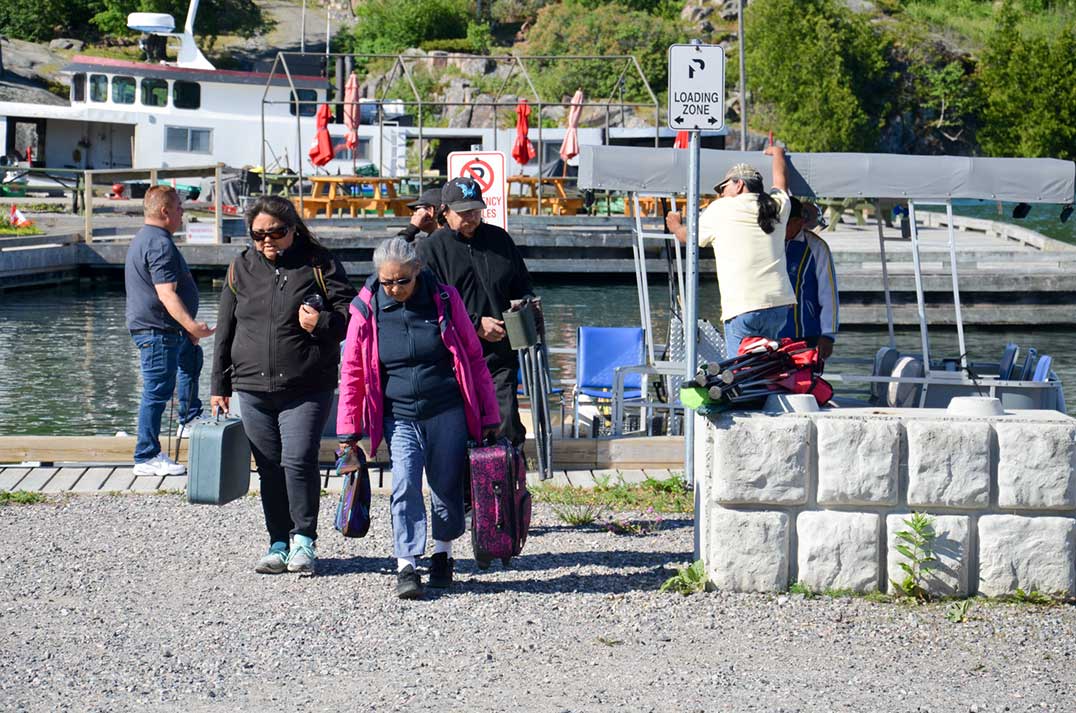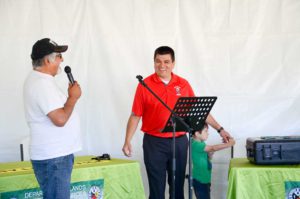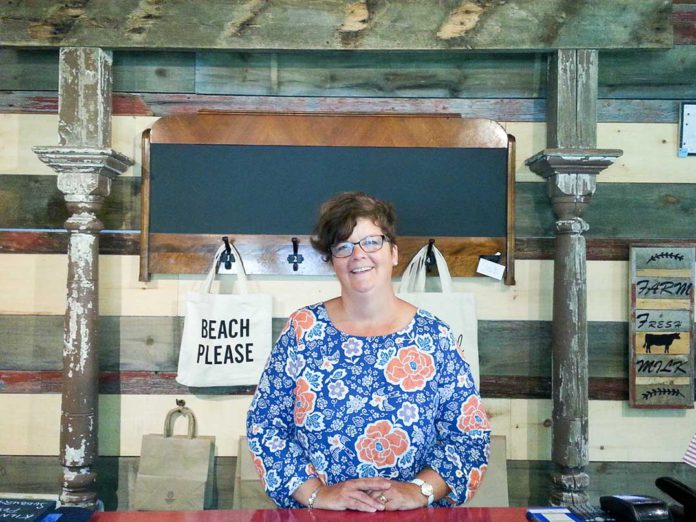KILLARNEY—Travelling by pontoon, motor boat, truck and car, more than 40 members of the Wikwemikong Unceded Territories made their way to the Town of Killarney for a cultural exchange that included representatives of most of the band’s departments, Debajehmujig Storytellers, historians, drummers and powwow dancers to provide an in-depth view of Wikwemikong’s history, current realities and culture.
Travelling by boat, it is quickly evident why Manitoulin and Killarney share so many common and historical bonds. While it takes more than two-and-a-half hours to travel by road, the trip through the sheltered waters and pristine islands of the North Shore of Georgian Bay takes a little over 20 minutes.
The first ceremony to take place on the Ki-nu maam-wi dun-kwesh-kwa-daad-wok be-maa-di-zi-jik (Bring the People Together) exchange was a sunrise ceremony. When the presentations and workshops began at 9 am, Roger Daybutch acted as emcee for the proceedings along with Stitch Manitowabi.
“It is important that these exchanges take place,” noted Wikwemikong Chief Duke Peltier in his opening remarks. “This is not my land, not your land, not Anishinabe land, this is our land.”
The Niagara Treaty of 1764 signaled the end of the wars over boundaries and included the Royal Proclamation which confirmed the territories of the Anishinaabe and Honeshone and how conversations over how land transfers were to take place.

Chief Peltier took the audience gathered under the tents on the Killarney waterfront through the histories of the 1836 Treaty which designated Manitoulin Island and the surrounding islands as Anishinaabe lands, but by 1850 settlement pressures saw a desire to revisit the boundaries. Historical records and oral histories paint a less than pretty picture of how that process went forward and form the basis of ongoing land claims in the region.
Part of the treaty process included gifts presented to local inhabitants of the region for the sharing of the land and resources, those monetary gifts were regularly reassessed and updated, until 1874, when the last increase was instituted.
“Today the RCMP show up with Indian and Northern Affairs to offer $4 to the beneficiaries,” noted Chief Peltier. “It is still a long-standing grievance. Some of the corporations are making only $300 million in the last quarter, a quarter of a billion dollars, yet our people continue to suffer. Had they been sharing all along, we would not be facing the problems we have been having in Northern Ontario.”

Following representations by each of the Wikwemikong band departments on what it is they do, an oral historian discussed the teachings of the wampum belts, the pictorial representations that outline the treaties that were understood by the Anishinaabe at the time who did not have a written language.
After lunch, a mini powwow presentation led by Tim McGregor of Birch Island explained many of the dances commonly seen at local powwows. At 4 pm, the Debajehmujig Storytellers provided a number of oral stories that are part of Anishinaabe traditions and culture. The day’s events were topped off with a two-hour Native Country (Music) Hall of Fame showcase.





